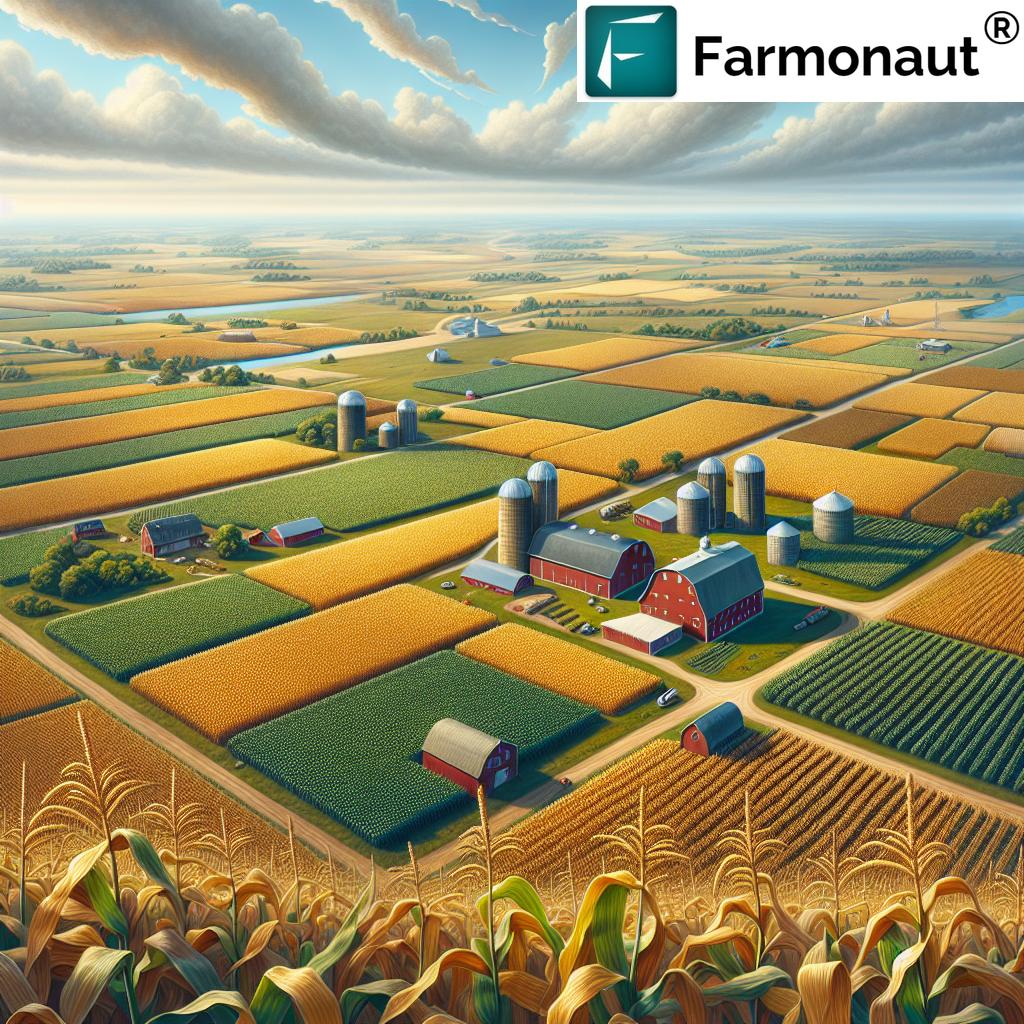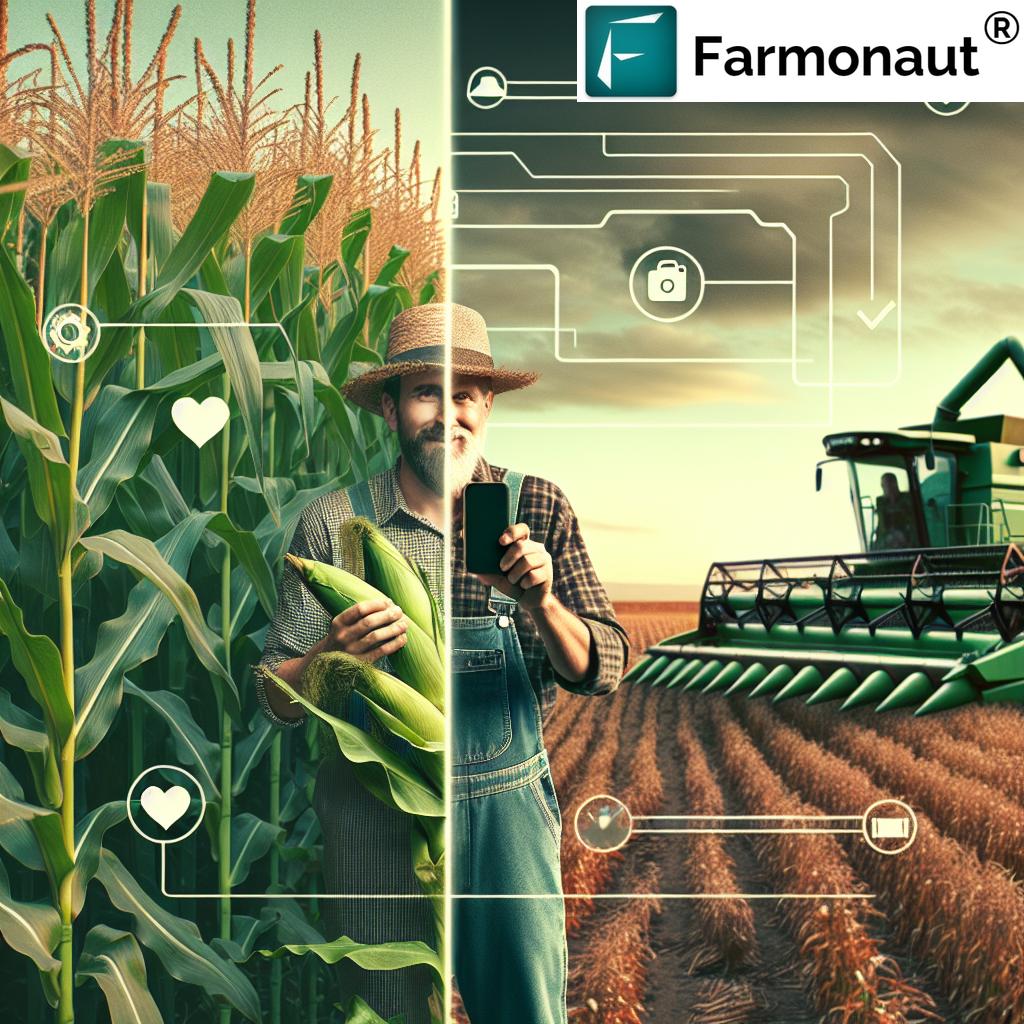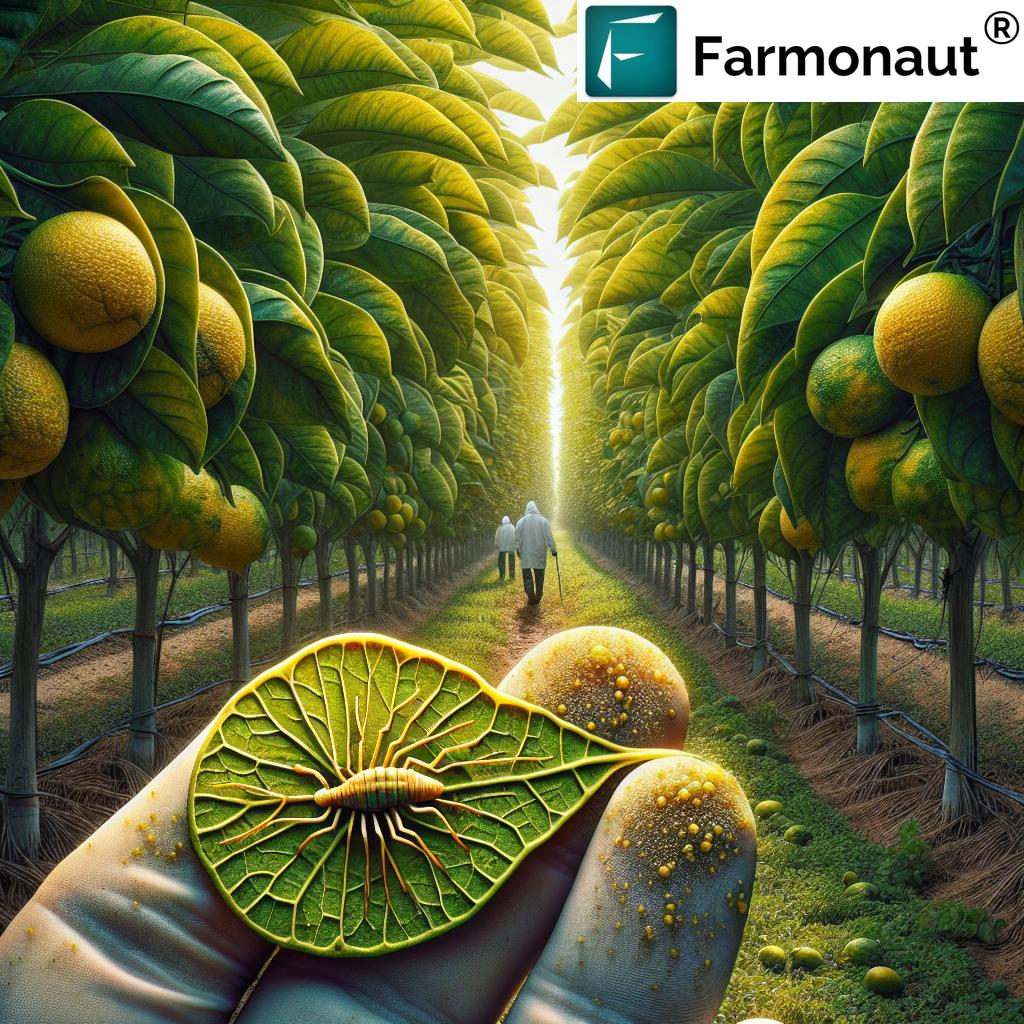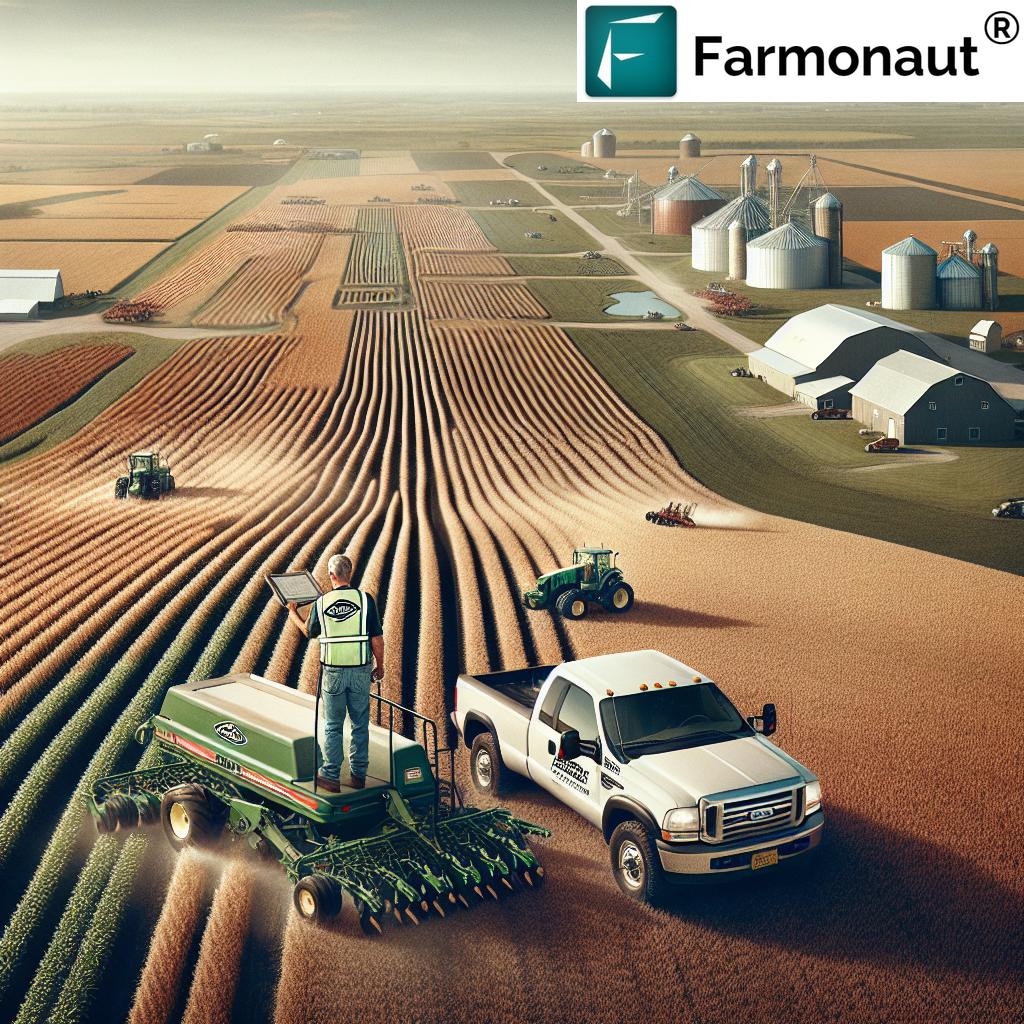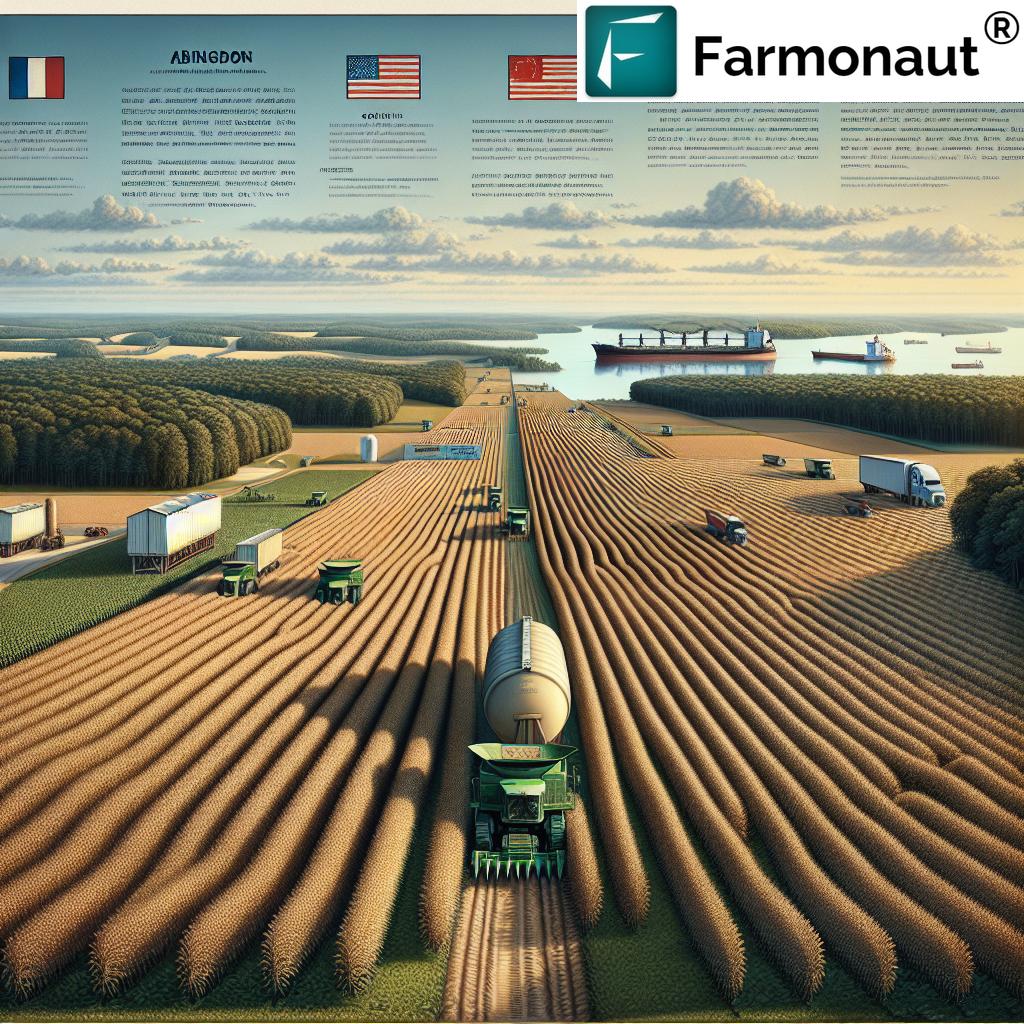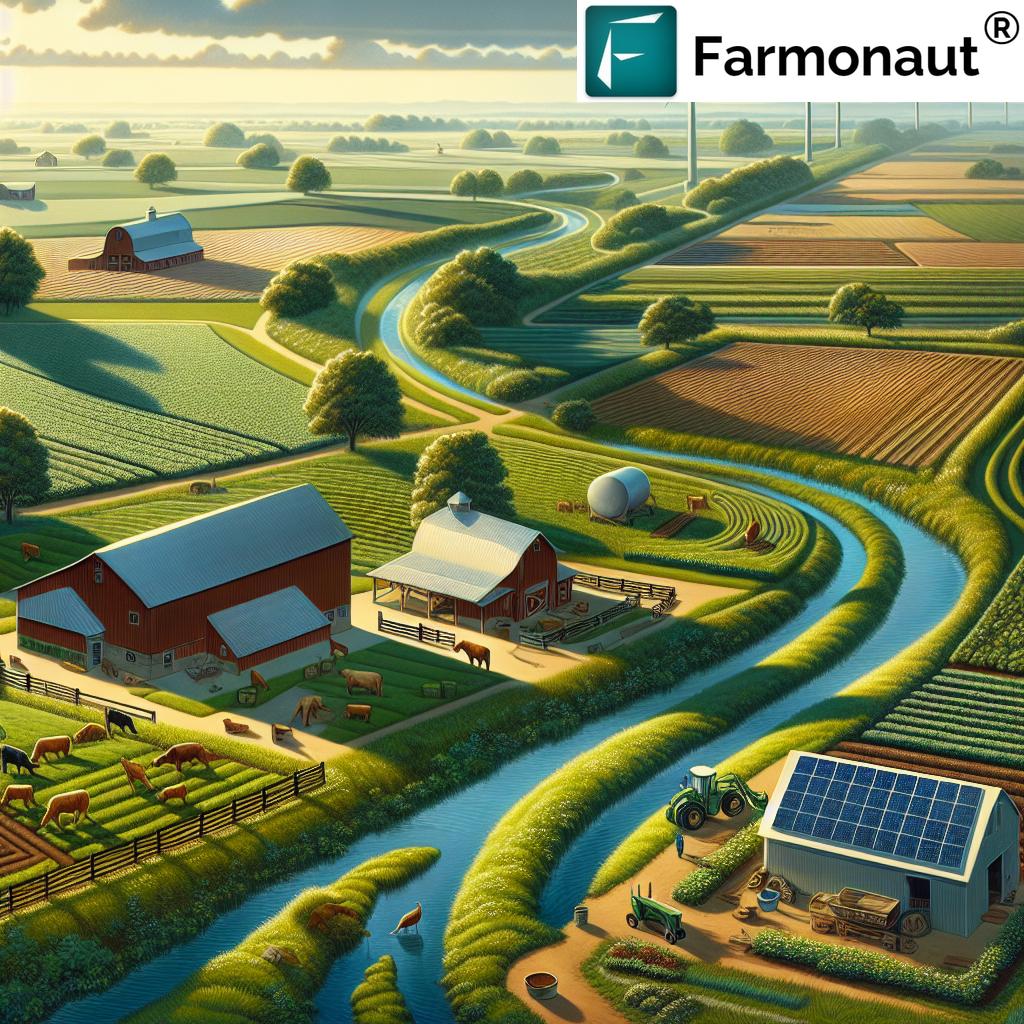Selling Farmland Illinois: 2025 Prices & Trends
Meta Description: Selling Farmland Illinois: 2025 Prices & Trends – Explore Illinois farmland prices, market outlook, and key considerations for buyers and sellers in 2025. Stay informed on agriculture Illinois, farmland sales, and key trends shaping the future of the market.
“Illinois farmland prices are projected to rise by 4% in 2025, reaching an average of $9,000 per acre.”
Table of Contents
- Illinois Farmland Market Snapshot 2025
- The Importance of Farmland in Illinois Agriculture
- Year-on-Year Farmland Price & Trend Comparison Table
- Key Factors Influencing Farmland Prices in Illinois
- Key Considerations for Selling Farmland Illinois in 2025
- Farmland Sales & Market Trends in Illinois
- Sustainability, Conservation, and the Rise of Precision Agriculture
- The Role of Forestry in Illinois Farmland Value
- Technological Advancements and the Impact of Farmonaut
- Tips for Buyers and Sellers in Illinois’ Farmland Market
- Frequently Asked Questions (FAQ)
- Conclusion: Looking Ahead to Illinois’ Farmland Market
Illinois Farmland Market Snapshot 2025
Selling farmland Illinois is an increasingly strategic decision in 2025, as farmland prices in Illinois continue to attract landowners, investors, and agriculture professionals. With farmland prices in Illinois expected to rise, understanding the current market dynamics is essential for anyone involved in agriculture Illinois, especially sellers and buyers planning for the future.
- Estimated Average Price Per Acre (2025): $9,000 (up 4% YoY)
- Key Market Dynamics: Sustained demand, stable commodity output, and evolving agricultural technology
- Primary Buyers: Existing farm owners, investors, institutional buyers, rural families
- Main Drivers: Fertile soils, strong commodity prices, proximity to urban markets, and sustainable agriculture practices
Illinois consistently ranks among the top states for farmland sales and agricultural output, thanks to its rich prairie soils, productive land, and a climate ideal for corn, soybeans, and wheat.
PEI Land Clash 2025 ? Housing Crisis vs Farmland Protection | Sleepy Hollow Tiny-Home Debate
The Importance of Farmland in Illinois Agriculture
Illinois’ reputation as one of the premier agricultural states in the United States is well deserved and long recognized. Boasting over 27 million acres of productive farmland statewide, Illinois supports:
- Consistently ranked among the top producers of corn, soybeans, and wheat
- Thriving agribusinesses and rural communities
- Fertile prairie soils and advanced farming Illinois practices
- Strategic access to interstate highways, railways, and water transport, facilitating both domestic and international markets
The state’s agricultural sector not only drives the economy, but also secures food supply chains and creates investment opportunities in a landscape valued for its long-term stability and productive legacy.
- 27 million acres statewide (much of it classified as high-quality cropland)
- Key crops: Corn, soybeans, wheat
- Consistently supports thousands of farmers, investors, landowners, and agribusinesses
- Backbone of Illinois economy: Direct impact on rural communities and urban food systems
With farmland being a valuable asset for both seasoned farmers and new investors, selling and buying agricultural land in Illinois has become a central topic for those looking to maximize legacy planning or diversify their portfolios.
“Over 60% of Illinois farmland sales in 2025 are expected to involve competitive bidding and online auctions.”
Year-on-Year Farmland Price & Trend Comparison Table
To provide a clear picture of localized trends in the Illinois farmland market, the following table compares key market indicators across major regions:
| Region / County | 2024 Avg. Price per Acre (Estimated) | 2025 Avg. Price per Acre (Estimated) | % Price Change YoY | Total Acreage Sold (Estimated) | Notable Market Factors |
|---|---|---|---|---|---|
| Central Illinois | $10,500 | $10,900 | +3.8% | 16,000 | High demand, competitive auctions, yield consistency |
| Northern Illinois | $9,700 | $10,100 | +4.1% | 10,500 | Proximity to Chicago, strong investor activity |
| Southern Illinois | $7,400 | $7,700 | +4.0% | 7,000 | Forestry value, recreational land use, lower commodity yields |
| Western Illinois | $8,500 | $8,850 | +4.1% | 8,800 | Emerging ag-tech adoption, drainage improvements |
| Eastern Illinois | $8,800 | $9,150 | +4.0% | 9,600 | Robust conservation programs, solid rural markets |
Bloomington IL Vegetable Gardening 2025 ? 7 Expert Tips to Maximize Harvests in Zone 5b
Key Factors Influencing Farmland Prices in Illinois
Understanding what drives farmland prices in Illinois is vital for anyone planning to sell farmland Illinois or invest in this sector in 2025. Several key factors affect the value, demand, and sales of land in Illinois:
1. Soil Quality and Productivity
- The state’s fertile prairie soils are renowned for supporting high crop yields, especially in central Illinois
- Soil health and capability are leading indicators, directly impacting land value
- Farmland with advanced management (irrigation, drainage, sustainable practices) often commands a premium
2. Commodity Markets and Global Demand
- Strong global demand for U.S. agricultural commodities (“corn, soybeans, wheat”) helps prop up prices
- Market volatility, interest rates, and input costs (fertilizers, fuel) shape short-term pricing trends
3. Regional and Infrastructure Advantages
- Proximity to urban centers (especially Chicago) raises interest from developers, institutional buyers, and investors
- Access to highways, railways, and rivers increases land’s logistical value
4. Technological Advancements
- Farms with precision agriculture systems, such as satellite monitoring and fleet management, often see higher valuations
- Sustainable and conservation-friendly practices are becoming key value drivers
– Learn more about how technology is transforming agriculture:
Large Scale Farm Management Tools from Farmonaut
– manage extensive fields with satellite insights, reduce resource wastage, and boost transparency.
Knox County 2025 ? Wind & Solar Ban? Land-Use Fight, Agrivoltaics & Clean-Energy Jobs
5. Regulatory, Tax, and Environmental Policy
- Local, state, and federal regulations on land use, zoning, and conservation directly impact sales
- 2025 brings new conservation incentives and reporting requirements, further shaping market behavior
- Capital gains tax, property tax rates, and succession planning play crucial roles for sellers
6. Market Timing and Economic Cycles
- The best time to sell farmland Illinois in 2025 is often influenced by harvest cycles, interest rates, and commodity price peaks
- Online auction platforms are increasingly popular, especially among institutional buyers
Key Considerations for Selling Farmland Illinois in 2025
The process to sell farmland Illinois has evolved, with a robust set of considerations for maximizing land value and ensuring compliance:
- Market Timing: Aligning a sale with market cycles and strong commodity prices can increase returns
- Land Quality & Use:
- Productivity, crop rotation history, and adaptability to alternative uses (e.g., forestry, conservation, pasture)
- Zoning, Environmental, and Water Rights:
- Understanding local regulations and property restrictions
- Mitigating legal and compliance risks in the transaction
- Tax Planning:
- Capital gains, inheritance, and property taxes can significantly affect the net proceeds
- Consult an agricultural-focused tax advisor when preparing your sale
- Professional Support:
- Work with professional farm managers, rural appraisers, and real estate brokers specializing in agricultural transactions for effective marketing, accurate pricing, and a smooth sales process
- Land Documentation:
- Provide transparent records for soil health, conservation plans, water rights, and improvements
For those looking to sell farmland Illinois or purchase agricultural property, using digital tools like Farmonaut’s satellite-based farm management solutions enhances data transparency and streamlines decision-making.
Regenerative Agriculture 2025 ? Carbon Farming, Soil Health & Climate-Smart Solutions | Farmonaut
Discover Farmonaut’s Carbon Footprinting feature, designed to help monitor and reduce the environmental impact of your farm. This tool is essential for sellers presenting a sustainable, climate-smart property in line with buyer expectations for 2025 and beyond.
Farmland Sales & Market Trends in Illinois
Major trends shaping selling farmland Illinois and farming investments in 2025 include:
- Competitive Online Auctions: Over 60% of transactions take place via online or competitive auction formats, a testament to strong demand and digital transformation within the sector.
- Growth in Institutional and Investor Activity: Pension funds and corporations continue to acquire land as part of their portfolio diversification and ESG (environmental, social, and governance) commitments.
- Resilient Pricing: Despite weather shifts and global supply chain concerns, the Illinois land market is characterized by relative stability and gradual appreciation—especially in top-producing counties.
- Sustainability Premium: Farmland with conservation practices, cover cropping, and regenerative agriculture certifications sees a higher sale price and more buyer interest.
- Technological Integration: Farms monitored by satellite imagery, fleet management, and resource optimization software attract buyers looking for operational efficiency and enhanced data transparency.
Unlocking Farm Potential: A Comprehensive Guide to Land Cover Classification and Farm Land Types
Regional Perspective
- Central & Northern Illinois: Home to the state’s most fertile soils, these regions command the highest land values and see strong demand from both farmers and investors.
- Southern Illinois: Offers opportunity for buyers interested in forestry, recreational, or mixed-use land, albeit often at lower price points.
- Eastern & Western Illinois: Characterized by robust rural communities, ongoing conservation initiatives, and emerging sustainability-focused buyers.
For buyers and sellers, leveraging transparent farm management data, traceability, and resource optimization drives value and shortens sale cycles.
Visit Farmonaut’s Traceability Solutions for agriculture, where blockchain delivers end-to-end transparency from farm to consumer.
The Hidden Importance of Land Classification: Why It Matters More Than You Think!
Sustainability, Conservation, and the Rise of Precision Agriculture
Selling farmland Illinois in 2025 involves aligning with modern buyer demands for sustainable, conservation-oriented, and tech-ready land holdings. The following industry practices are especially valued:
- Cover Cropping and Reduced Tillage: Protect and build soil health, reduce erosion, and support long-term productivity
- Integrated Pest & Resource Management: Minimize input costs and environmental impact while optimizing yields
- Carbon Footprint Tracking: Farms leveraging digital carbon reporting solutions—like the ones available through Farmonaut’s Carbon Footprinting suite—will be increasingly appealing on the open market
- Water Management and Conservation Easements: Buyers place a premium on water-secure, conservation-compliant acreage
- Blockchain Traceability: Traceable, certified sustainable grain draws corporate grain buyers and raises values
Tools like Farmonaut’s Fleet Management platform help monitor farm and equipment operations, reducing costs and improving transparency for both sellers and buyers in the market.
Farmonaut Large Scale Field Mapping & Satellite Based Farm Monitoring | How To Get Started
The Role of Forestry in Illinois Farmland Value
While cropland dominates, forestry and timberland form a crucial segment in southern Illinois and parts of western Illinois. The value and sale price for timberland differ due to:
- Local demand for timber and wood products
- Certification (Sustainable Forestry Initiative, Forest Stewardship Council)
- Conservation easements and eligibility for government incentive programs
- Mixed-use appeal (timber, habitat, recreation)
Sellers should prepare recent timber inventory assessments, document any conservation practices, and present proof of sustainability for buyers looking for long-term recreational, investment, or conservation value.
Farmonaut® | Making Farming Better With Satellite Data
Looking to diversify your farm or forest advisory strategy? Explore Farmonaut’s Crop Plantation & Forest Advisory Tools – improve land management and sustainability outcomes.
Technological Advancements and the Impact of Farmonaut
Modern farm management and data-driven decision-making set apart high-value land listings in Illinois today. At Farmonaut, we are committed to making affordable precision agriculture a reality for everyone involved in farming Illinois. Our solutions empower farmers, sellers, and buyers by:
- Satellite-Based Crop Health Monitoring: Identify stress early, optimize irrigation and fertilizer use, and maintain top production—all without the need for expensive sensors or manual scouting
- AI-Driven Advisory (Jeevn AI): Get real-time weather forecasts and farming advice tailored to your property’s conditions
- Real-Time Carbon Footprinting: Track and manage your operation’s environmental footprint for compliance and market differentiation
- Blockchain Traceability: Enhance transparency and trust in your supply chain, meeting the demands of modern buyers and regulators
- Fleet and Resource Management: Lower operational costs, track assets efficiently, and optimize your entire farm operation
We support not only seasoned farm owners in increasing long-term value, but also new investors and rural landowners as they aim for operational efficiency and sustainability in a rapidly evolving agriculture Illinois landscape.
Explore more:
-
Satellite-Based Crop Loan & Insurance Verification
— supports faster, more transparent loan and insurance approvals through real-time land and crop verification, reducing fraud and delays for both farmers and lenders.
Or integrate Farmonaut directly into your workflow:
Farmonaut API
| API Developer Docs
Tips for Buyers and Sellers in Illinois’ Farmland Market
For Sellers:
- Conduct a Professional Land Appraisal: Partner with accredited rural appraisers to set accurate, competitive prices.
- Gather Documentation: Assemble recent soil tests, yield reports, conservation certifications, property maps, and operational records.
- Maximize Curb Appeal: Maintain physical property boundaries, roads, drainage, and demonstrate sustainable practices.
- Promote Sustainability Credentials: Highlight carbon tracking, blockchain traceability, or water conservation measures in your marketing.
- Leverage Digital Marketing: List on reputable online platforms and work with agents who understand modern ag-tech and market dynamics.
For Buyers:
- Evaluate Soil, Infrastructure, and Water: Prioritize properties with proven soil quality, solid infrastructure, and long-term water access.
- Consider Future-Readiness: Seek land with precision agriculture systems, remote monitoring, and digital management capabilities.
- Understand Zoning and Compliance: Assess all local, state, and federal restrictions before purchase.
- Engage Professional Advisors: Consult agricultural law and tax experts, appraisers, and land managers.
- Factor in Long-Term Outlook: Anticipate market cycles, sustainability trends, and possible regulatory changes through 2030 and beyond.
Frequently Asked Questions (FAQ)
The average price per acre is projected to be around $9,000, with some regions—such as central Illinois—exceeding $10,000 per acre and southern areas typically lower.
Q2: What are the most important factors affecting farmland prices in Illinois?
Key factors include soil quality, commodity prices, market timing, technological advancements (e.g., precision agriculture), zoning and environmental regulations, and proximity to urban markets.
Q3: Is 2025 a good year to sell farmland Illinois?
2025 is considered highly favorable for sellers, with prices projected to rise and significant demand expected from both institutional and family buyers.
Q4: How can Farmonaut help maximize farmland value?
Farmonaut provides real-time satellite-based monitoring, carbon footprint tracking, blockchain traceability, and farm management tools that improve transparency, marketability, and operational efficiency—making your land more attractive to modern buyers.
Q5: What are common issues faced when selling Illinois farmland?
Challenges include complex tax planning, documentation requirements, fluctuating market conditions, and aligning the sale with the right market cycle for maximum returns.
Q6: Can buyers finance farmland purchases in Illinois easily?
There is strong lender interest, with more financing options available for land with solid documentation, traceable production history, and precision farming records. Satellite verification helps with smoother loan and insurance approval processes.
Q7: How are forestry and recreational land different from cropland in value?
Forestry and recreational land are valued based on timber inventories, conservation status, and sustainability credentials, typically fetching lower prices than premium cropland but offering other investment opportunities.
Conclusion: Looking Ahead to Illinois’ Farmland Market
The landscape for selling farmland in Illinois in 2025 is marked by rising prices, stable demand, and an expanded role for technology and sustainability. With farmland prices Illinois trending upward and new buyers entering the market, Illinois continues to offer unmatched opportunity for farmers, investors, and rural families alike.
As agriculture Illinois evolves—with sustainability, digital management, and transparency taking center stage—both sellers and buyers stand to benefit from a proactive, informed approach to land transactions. When considering a sale or purchase, strategic timing, robust documentation, and technology adoption will be key to maximizing outcomes in the years to come.
At Farmonaut, we remain dedicated to empowering the Illinois farming community with innovative, accessible precision agriculture tools that support informed decisions and long-term legacy building. Whether optimizing crop yields, tracking sustainability, or preparing for your next land transaction, our satellite-based solutions and advisory systems make it easier to succeed in a competitive and ever-changing market.
Ready to take your farm management and land strategies to the next level?
Download our Farmonaut App, explore our API, or consult our developer docs. For personalized support, explore our large-scale farm management solutions, and make data-driven decisions for a more productive, valuable, and sustainable farmland legacy.
“Illinois farmland: a sustainable, competitive, and tech-driven investment for generations to come.”





